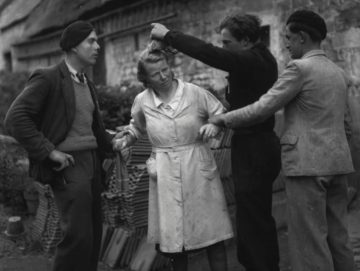Ann Mah in Time:
 They called it the épuration sauvage, the wild purge, because it was spontaneous and unofficial. But, yes, it was savage, too. In the weeks and months following the D-Day landings of June 6, 1944, Allied troops and the resistance swept across France liberating towns and villages, and unleashing a flood of collective euphoria, relief and hope. And then the punishments began.
They called it the épuration sauvage, the wild purge, because it was spontaneous and unofficial. But, yes, it was savage, too. In the weeks and months following the D-Day landings of June 6, 1944, Allied troops and the resistance swept across France liberating towns and villages, and unleashing a flood of collective euphoria, relief and hope. And then the punishments began.
The victims were among the most vulnerable members of the community: Women. Accused of “horizontal collaboration” — sleeping with the enemy — they were targeted by vigilantes and publicly humiliated. Their heads were shaved, they were stripped half-naked, smeared with tar, paraded through towns and taunted, stoned, kicked, beaten, spat upon and sometimes even killed.
One photograph from the era shows a woman standing in a village as two men forcibly restrain her wrists; a third man grabs a hank of her blonde hair, his scissors poised to hack it away. Just as the punished were almost always women, their punishers were usually men, who acted with no legal mandate or court-given authority.
More here. [Thanks to Ram Manikkalingam.]
